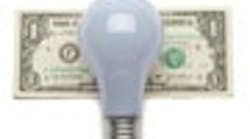A common energy issue I've observed in petroleum refineries is low condensate recovery from steam users. Typical steam condensate recovery ranges from 20–45%, but the recovery potential is around 75%. Steam users such as heat tracer lines, tank farm heating coils and exchangers, and remote heat exchangers generally don't return condensate back to the boiler.
[pullquote]Most of these refineries were designed 30 years ago, when energy prices and boiler feed-water treatment costs were low. Wastewater disposal also wasn't an issue to many remote operations. With present day environmental concerns, sites should put a priority on reconsidering draining reusable, good quality boiler feed water to the wastewater system.
Because heat tracers are supplied with steam at constant pressure without any modulation, collecting and returning the condensate from the tracer traps is a simple task — if the tracer system is organized well. Proper steam supply and condensate collection manifolds can help revamp old and unorganized heat tracing systems. A proper steam tracer system design not only enhances condensate recovery, but also improves system maintenance and helps quickly prevent unexpected process failures that could happen during severe winter storms.
Collecting and returning condensate from tank farm heaters is another energy efficiency improvement. In one Caribbean refinery I worked at, all fresh water, including boiler feed water, was made from distilled sea water. Circulated sea water was used to cool all process heat exchangers. Condensate recovery was still around 20%. Because the return headers and pumps were not maintained, they had become obsolete, resulting in several tank farm heaters collecting the condensate, but draining to the local sewers. In this situation, new condensate pumps and additional pipelines could return the condensate back to the utility plant. Even pumping the condensate to nearby process units for internal fresh water use would save marginally the expensive sea water generation.
When steam users at remote locations use steam at different pressure levels, it's likely that the low-pressure (LP) steam users are draining condensate to the grade. It's typical for the initial utility system design to provide a single condensate return header with limited margins to collect and return the condensate. Over a period of plant expansions with condensate sources at different pressures, the return system wouldn't be able to handle condensate at all pressure levels. In this case, reassess the condensate handling capacity of the return system and make suitable modifications such as adding segregated pipelines, flash tanks and pumps. This reengineering action would not only enhance the condensate recovery, but also help eliminate problems like water hammer and unsafe pipeline ruptures.
To further reduce energy costs and improve energy efficiency, consider reevaluating the low-level (LL) heat rejections to atmosphere from various process units. Exhaust gases from process heaters' heat recovery coils, and distillation column exit streams that need cooling and condensing constitute the LL heat rejection sources. Because the existing heat recovery coils and heat integration exchangers were designed based on temperature limits set decades ago, reevaluating the heat rejection temperatures at the present energy cost levels would be a worthy exercise.
Occasionally, a suitable reuse option for the rejected LL heat may exist in a neighboring process unit. If the fuel gas system consistently contains increased valuable light ends such as propane and butane, better overhead vapors cooling would help recover these light ends from the fuel gas. The rejected LL heat would help run an absorption chiller and improve overhead vapors cooling. Many petroleum refineries, especially in southern states, are considering adding absorption chillers that use the LL heat presently rejected from their process heaters and air-fin condensers.
Reviewing the steam system balance may open up multiple energy-saving opportunities. Petroleum refineries utilize steam at several pressure levels ranging between high and low. To reduce these energy losses, pay close attention to the number of operating steam turbines that lead to LP steam venting, and continuous use of pressure-reducing valves to obtain LP steam from high-pressure headers. Process engineers should give priority to optimizing the steam balance to minimize both situations.
Petroleum refineries offer endless options for energy cost reduction.
VEN V. VENKATESAN is Chemical Processing's Energy Columnist. You can e-mail him at [email protected]


